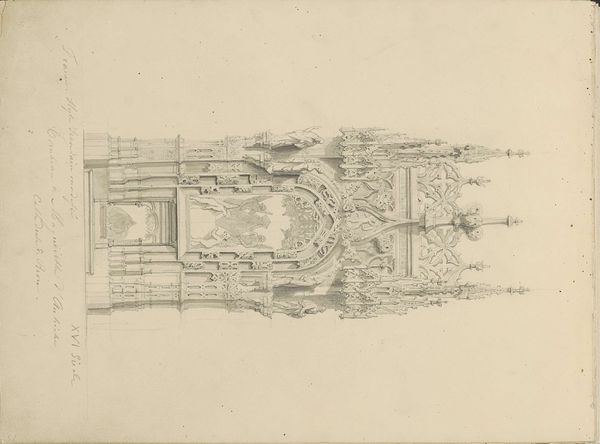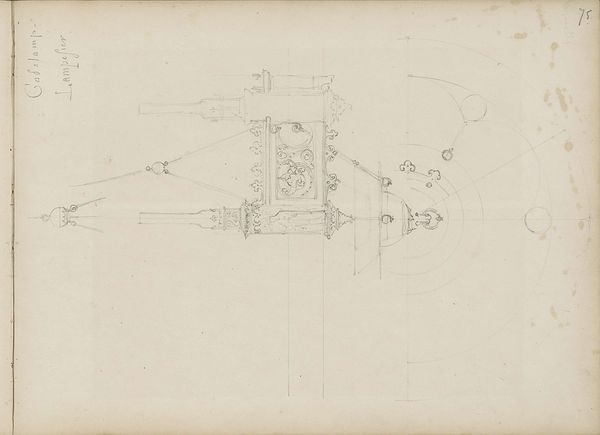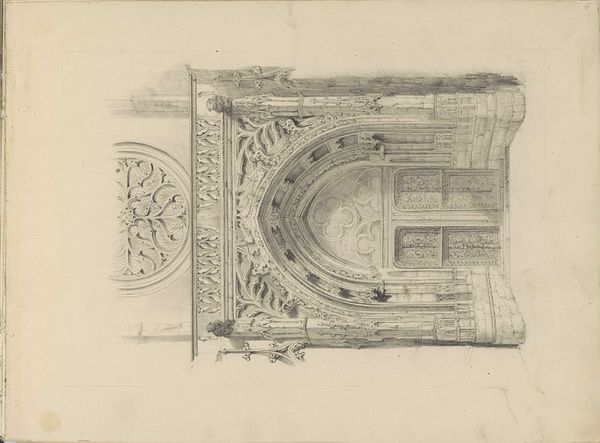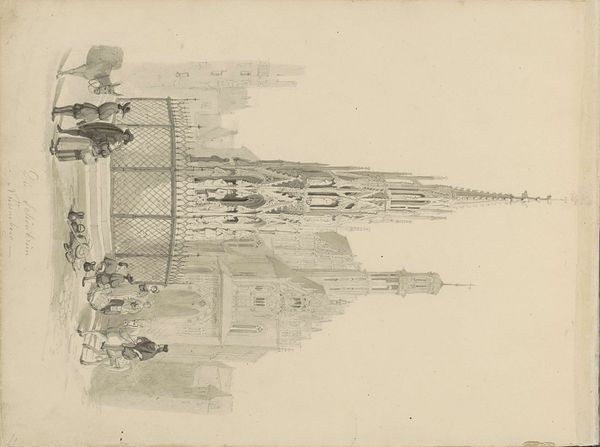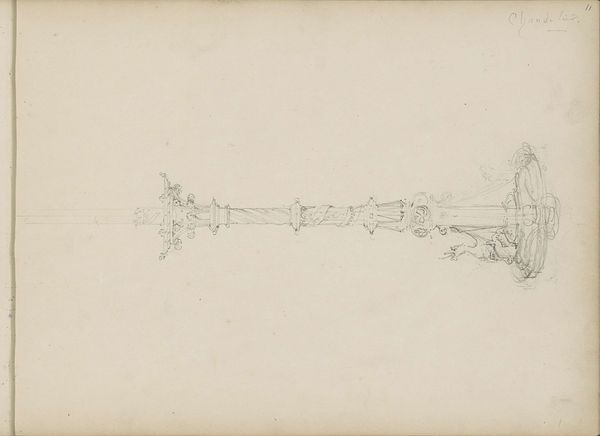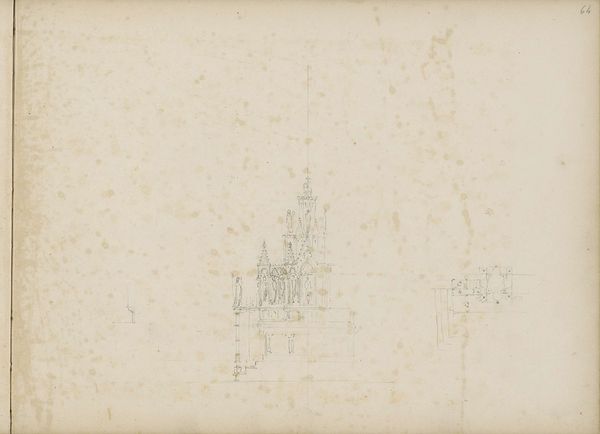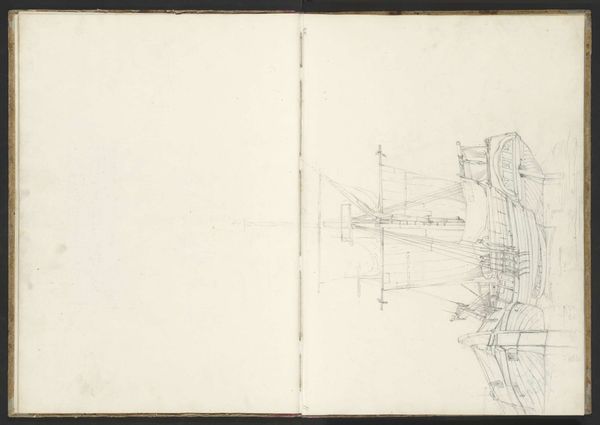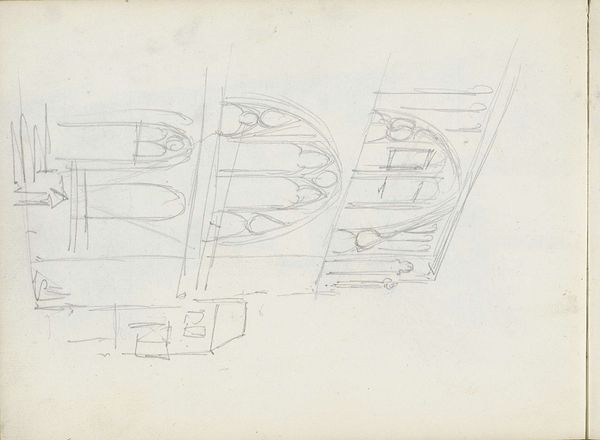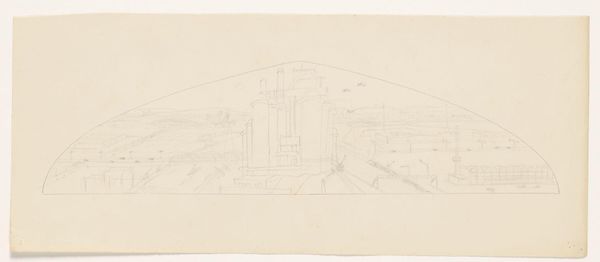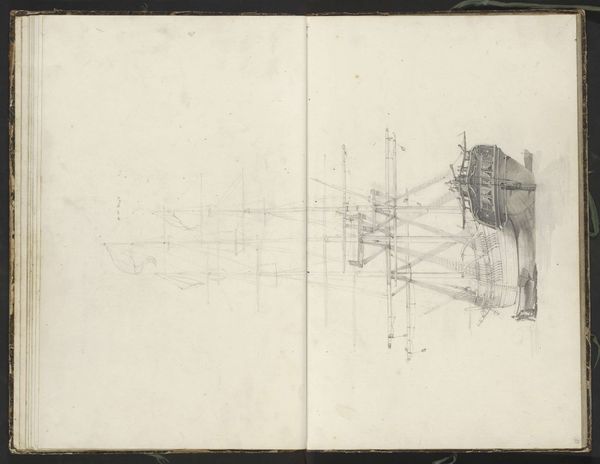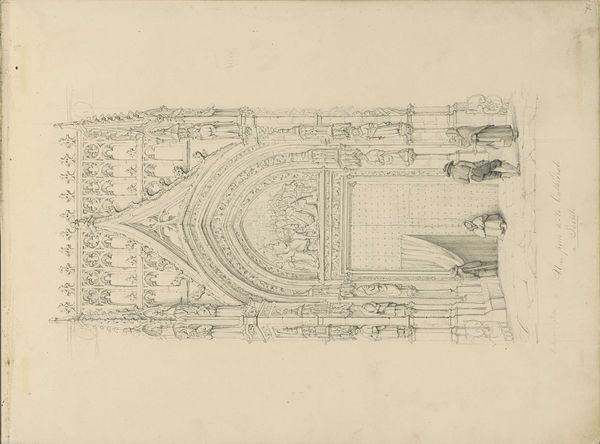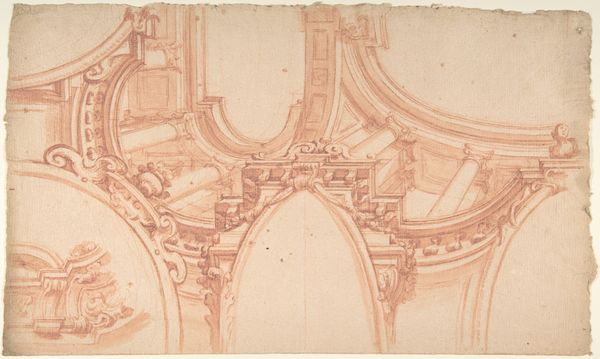
Copyright: Rijks Museum: Open Domain
This is Pierre Cuypers's "Gothic Monument," a pencil drawing now housed at the Rijksmuseum. Cuypers, who lived from 1827 to 1921, designed many churches in the Netherlands, and this drawing reflects the cultural and political context of the late 19th century. During this time, the Netherlands experienced a revival of Catholic identity and culture. Cuypers became a leading figure in the Gothic Revival movement, drawing inspiration from medieval architecture to express religious and nationalistic sentiments. This revival can be seen as an attempt to create a sense of historical continuity and cultural pride at a time when traditional identities were being challenged. The choice of the Gothic style was deeply symbolic, harking back to a time when the Catholic Church held significant cultural and political power in Europe. Cuypers embraced this style to promote a sense of national identity rooted in religious tradition. The emotional impact is evident in the drawing's meticulous detail, which conveys a sense of reverence for the past. This piece helps us consider the intricate ways in which architectural design can be used to shape and reflect societal values, and to stir personal and collective memory.
Comments
No comments
Be the first to comment and join the conversation on the ultimate creative platform.
